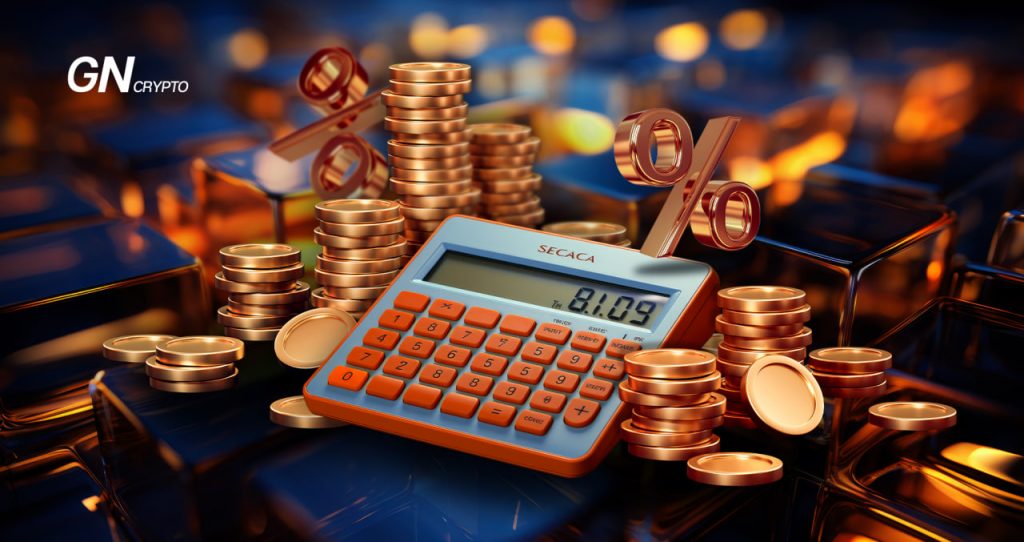APR and APY: How to Calculate Interest Rates?

Before you venture into the DeFi world, it’s smart to get a grip on the terms that underlie yield calculations. The key concepts you need to master are the Annual Percentage Rate (APR) and the Annual Percentage Yield (APY). What’s the difference between the two?
On this page
What is the Annual Percentage Rate?
The Annual Percentage Rate (APR) is the rate that reflects the total cost of a loan to the borrower. This rate isn't limited to the yearly earnings, which, by the way, might even be negative. It also includes all the fees associated with the maintenance of the loan, such as transfer fees and contributions to the protocol. The APR specifies the total amount that will be paid each year on the loan's remaining balance.
Within the DeFi sector, APR is utilized to gauge the potential profit a user could realize from lending or borrowing cryptocurrencies within various protocols.
What is the Annual Percentage Yield?
The Annual Percentage Yield (APY) signifies the actual rate of return that an investment can yield over a year. This figure gives investors a clear understanding of how their funds, invested in a particular asset, are expected to appreciate over time. This pertains to the staking of tokens as well.
Annual Percentage Yield incorporates the effect of compounding interest, which is the accumulation of interest on previously earned interest.
What is the difference between APY and APR?
Both metrics are used to calculate financial costs and returns, but they differ in their application.
APR is frequently utilized in the context of loans and credits, serving as a measure to calculate the total true cost associated with borrowing.
On the other hand, APY is deployed to gauge the yield of savings and investment accounts, factoring in the effects of compound interest, which, when added to the principal amount, amplifies the annual return. This consideration becomes especially pertinent for long-term investments.
Hence, even if APR and APY percentages appear identical within decentralized protocols, they yield different results for the parties involved when the year concludes.
How to calculate APR?
When it comes to DeFi protocols, APR is calculated in two forms: fixed and variable.
A fixed APR is clearly defined within the loan's terms, meaning it remains constant throughout the agreement. A variable APR, however, can adjust based on how the market value of the volatile asset changes over the loan period, with rates typically oscillating between 1% and 9%.
For a lender, determining the annual fixed interest rate is quite simple.
Let's say you lend out 1,000 coins at a yearly interest rate of 10%. By the end of the first year, you would expect a repayment of 1,100 coins, and by the second year's end, 1,200 coins, and so on.
For a variable rate, the interest depends on the asset's market value at the time of the deal's closure. Because cryptocurrency value is converted into USD (or into a dollar-tied stablecoin), an increase in price results in a lower interest rate. The conditions of a loan with a variable APR are managed by a smart contract, which takes into account the specific asset, the length of the loan, and the protocol used.
Another key aspect of crypto lending to consider is the rapid change in the initial value of the tokens, something users need to be constantly aware of. Long-term borrowing is risky for both the lender and borrower, prompting the need for regular monitoring of the rates offered on different DeFi platforms. In such a volatile environment, it can be wise to switch protocols if more favorable lending rates are available elsewhere.
How to calculate APY?
The formula for calculating compound interest is as follows:
APY= (1+r/n)-1
Where:
r = the annual interest rate expressed as a decimal;
n = the compounding frequency per year, such as 12 for monthly or 4 for quarterly compounding.
For example, let's say you've staked 1,000 units of a hypothetical token with an annual interest rate of 5%. In theory, you would expect an additional 50 tokens at the end of the year. But if that 5% interest is compounded monthly, the actual APY turns out to be approximately 5.116%, which would yield a slightly higher return of 51.16 tokens over the same period.
The frequency of compounding plays a pivotal role. A 5% rate compounded quarterly will accumulate to a greater sum over a year than a 4% rate compounded monthly.
However, doing such calculations manually can be quite tedious.Instead, you can use one of the various staking calculators available for different protocols to easily calculate APY.
The content on The Coinomist is for informational purposes only and should not be interpreted as financial advice. While we strive to provide accurate and up-to-date information, we do not guarantee the accuracy, completeness, or reliability of any content. Neither we accept liability for any errors or omissions in the information provided or for any financial losses incurred as a result of relying on this information. Actions based on this content are at your own risk. Always do your own research and consult a professional. See our Terms, Privacy Policy, and Disclaimers for more details.

























